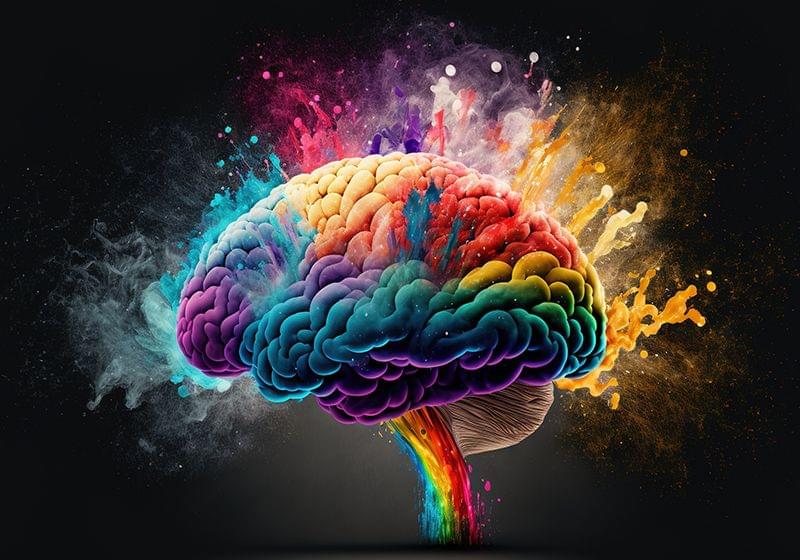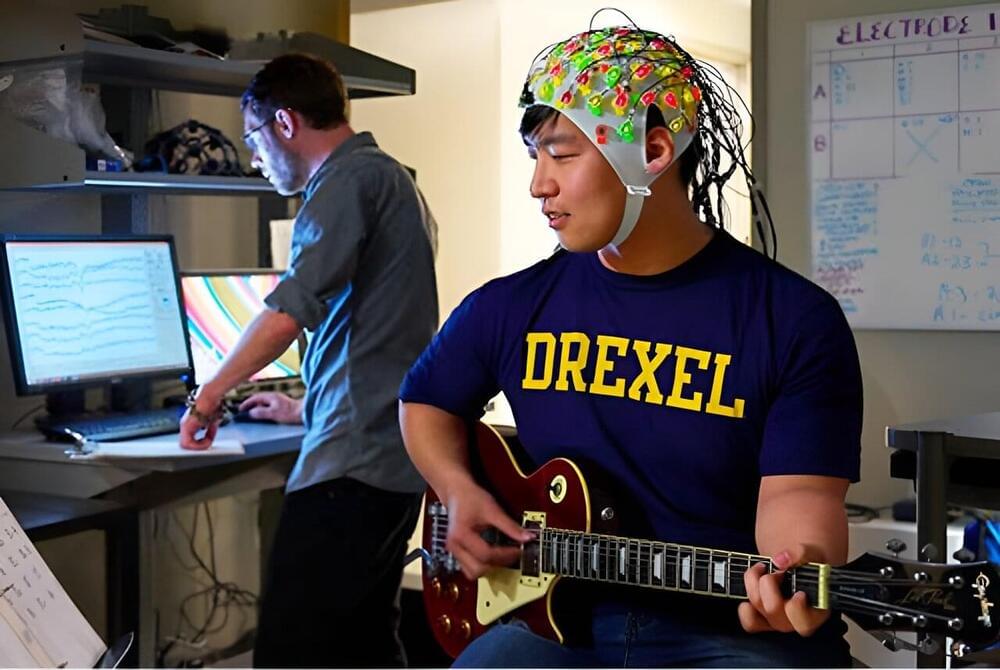Alexander Borst, Max-Planck-Institute for Biological Intelligence, Martinsried, GermanyAbstract: Detecting the direction of image motion is important for vis…
Category: neuroscience – Page 460

Brain communicates in both digital and analog
Unlike computers, cells in the brain use digital and analog signals at the same time to communicate with each other, researchers have found.
The finding contradicts the belief that nerve cells in the brain communicate with each other using digital code only.
In an analog system, signals can vary continuously, while digital systems represent signals by a series of pulses. The brain uses a mixture of the two to transmit signals among cells, researchers say.

Decoding Emotions: Beyond Senses in the Human Brain
Summary: A new study explores how the human brain constructs emotions, regardless of sensory input.
By analyzing brain activity in individuals with and without sensory deprivations while they experienced the film 101 Dalmatians, researchers discovered that emotions are represented in the brain through an abstract coding system that transcends sensory modalities. This system involves a distributed network, including the ventromedial prefrontal cortex, which stores abstract representations of emotions.
The findings challenge traditional views on emotion and perception, suggesting that our emotional experiences are not solely dictated by our immediate sensory input but are instead constructed by the brain in a more abstract manner.

Exploring the Past, Present, and Future of Brain Organoids
ABOVE: After years of research, brain organoids now come close to mimicking endogenous brain cells. © iStock, StockSnap.
As a developmental neurobiologist at Harvard University, Paola Arlotta spends most of her time thinking about how the brain develops, how it functions, and what goes wrong in the context of neurological disease. Using human brain organoids as a model for brain development and disease research has been a game changer, providing Arlotta a novel view into brain pathologies that form in utero.

Your brain in the zone: A new neuroimaging study reveals how the brain achieves a creative flow state
The University of Chicago Medicine is among the first 30 institutions in the country to offer tumor-infiltrating lymphocyte (TIL) therapy for advanced melanoma, immediately activating as an authorized treatment center after federal regulators approved the treatment on February 16, 2024.
Effortless, enjoyable productivity is a state of consciousness prized and sought after by people in business, the arts, research, education and anyone else who wants to produce a stream of creative ideas and products. That’s the flow, or the sense of being “in the zone.” A new neuroimaging study from Drexel University’s Creativity Research Lab is the first to reveal how the brain gets to the creative flow state.
The study is published in the journal Neuropsychologia.
The study isolated flow-related brain activity during a creative task: jazz improvisation. The findings reveal that the creative flow state involves two key factors: extensive experience, which leads to a network of brain areas specialized for generating the desired type of ideas, plus the release of control— letting go—to allow this network to work with little or no conscious supervision.

Introducing the next generation of Claude
Anthropic announces Claude 3
The three state-of-the-art models.
Claude 3 opus, claude 3 sonnet, and claude 3 haiku.
Today, we’re announcing the Claude 3 model family, which sets new industry benchmarks across a wide range of cognitive tasks. The family includes three state-of-the-art models in ascending order of capability: Claude 3 Haiku, Claude 3 Sonnet, and Claude 3 Opus.

Exposure to different kinds of music influences how the brain interprets rhythm
When listening to music, the human brain appears to be biased toward hearing and producing rhythms composed of simple integer ratios—for example, a series of four beats separated by equal time intervals (forming a 1:1:1 ratio).
However, the favored ratios can vary greatly between different societies, according to a large-scale study led by researchers at MIT and the Max Planck Institute for Empirical Aesthetics and carried out in 15 countries. The study included 39 groups of participants, many of whom came from societies whose traditional music contains distinctive patterns of rhythm not found in Western music.
“Our study provides the clearest evidence yet for some degree of universality in music perception and cognition, in the sense that every single group of participants that was tested exhibits biases for integer ratios. It also provides a glimpse of the variation that can occur across cultures, which can be quite substantial,” says Nori Jacoby, the study’s lead author and a former MIT postdoc, who is now a research group leader at the Max Planck Institute for Empirical Aesthetics in Frankfurt, Germany.

Lothar Schafer — Does Consciousness Cause the Cosmos?
Shop Closer To Truth merchandise and support the show with your purchase: https://bit.ly/3P2ogjeSome claim consciousness, our inner awareness, is part of a ‘…

Major discovery in the genetics of Down syndrome
Researchers at CHU Sainte-Justine and Université de Montréal have discovered a new mechanism involved in the expression of Down syndrome, one of the main causes of intellectual disability and congenital heart defects in children. The study’s findings were published today in Current Biology.
Down syndrome (SD), also called trisomy 21 syndrome, is a genetic condition that affects approximately one in every 800 children born in Canada. In these individuals, many genes are expressed abnormally at the same time, making it difficult to determine which genes contribute to which differences.
Professor Jannic Boehm’s research team focused on RCAN1, a gene that is overexpressed in the brains of fetuses with Down syndrome. The team’s work provides insights into how the gene influences the way the condition manifests itself.